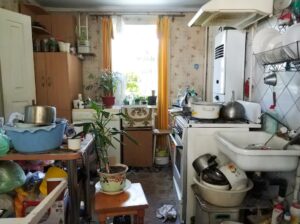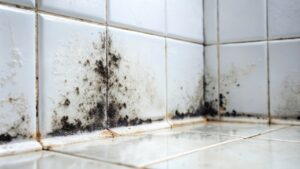As the school year kicks off and your kids hit the books, it’s easy to shift focus away from the home. However, there’s a silent intruder that might be lurking in the corners of your house—mold. Mold isn’t just unsightly; it can pose serious health risks, especially to your little ones. While you’re busy preparing lunches and checking homework, mold could be creeping into your home, impacting the air quality and potentially causing health issues.
Why Mold Is a Concern During the School Year
During the summer, your home might have experienced high humidity levels, leaky roofs, or even undetected water damage—all prime conditions for mold growth. As your kids head back to school, it’s easy to overlook these problems, especially when everyone’s schedule is packed. Mold thrives in damp, dark, and unventilated areas, making basements, bathrooms, and behind appliances common hotspots.
Ignoring mold growth can lead to respiratory issues, and allergies, and even exacerbate asthma, particularly in children who spend more time indoors once school starts. With their immune systems still developing, children are more susceptible to the harmful effects of mold exposure.
The Impact of Mold on Health
Mold produces allergens, irritants, and sometimes toxic substances called mycotoxins. Mold exposure can trigger symptoms such as:
- Sneezing and coughing: Often mistaken for seasonal allergies, these symptoms can persist or worsen over time.
- Skin irritation: Rashes or itchy skin might develop in sensitive individuals.
- Asthma flare-ups: For kids with asthma, mold exposure can trigger attacks and make managing the condition more difficult.
- Cognitive effects: Some studies suggest that prolonged mold exposure can impact cognitive function, affecting focus and learning.
How to Spot Mold in Your Home
Mold isn’t always easy to spot. It can hide behind walls, under carpets, and in less-frequented areas like attics or crawl spaces. Here are some signs to look out for:
- Musty odors: If you notice a persistent, damp smell in your home, it could be a sign of hidden mold.
- Visible growth: Mold can appear as black, green, or even white spots on walls, ceilings, or floors.
- Water stains: Discolored patches on walls or ceilings may indicate water damage, which can lead to mold growth.
- Peeling paint or wallpaper: Moisture trapped behind walls can cause paint or wallpaper to peel, a potential sign of mold issues.
Preventing Mold Growth
The best way to deal with mold is to prevent it from taking hold in the first place. Here are some proactive steps you can take:
- Control humidity levels: Use dehumidifiers in damp areas, especially basements. Aim to keep indoor humidity between 30-50%.
- Fix leaks promptly: Whether it’s a leaky roof or a dripping pipe, addressing water issues quickly is crucial to preventing mold growth.
- Ventilate your home: Ensure proper ventilation in high-moisture areas like bathrooms and kitchens. Use exhaust fans or open windows when showering or cooking.
- Clean and dry wet areas: After any water exposure, be it from a spill or a flood, thoroughly dry the area within 24 to 48 hours to prevent mold growth.
- Regularly inspect and maintain your home: Keep an eye on potential problem areas, such as windows, doors, and the foundation.
What to Do If You Find Mold
If you suspect mold in your home, it’s essential to address it quickly. While small areas of mold can be cleaned with commercial products or a vinegar solution, more extensive infestations should be handled by professionals. Mold remediation experts can safely remove mold and take steps to prevent future growth.
As your kids focus on their studies this school year, don’t let mold disrupt your household’s health and safety. By staying vigilant and taking proactive measures, you can ensure your home remains a safe and healthy environment for your family. Remember, keeping mold at bay isn’t just about cleaning—it’s about maintaining a home that supports your family’s well-being.
If you suspect mold in your home or want to ensure your living space is mold-free, contact the experts at Mold Solutions. We’ll help you keep your home healthy, so you can focus on what matters most—your family’s safety and happiness.








